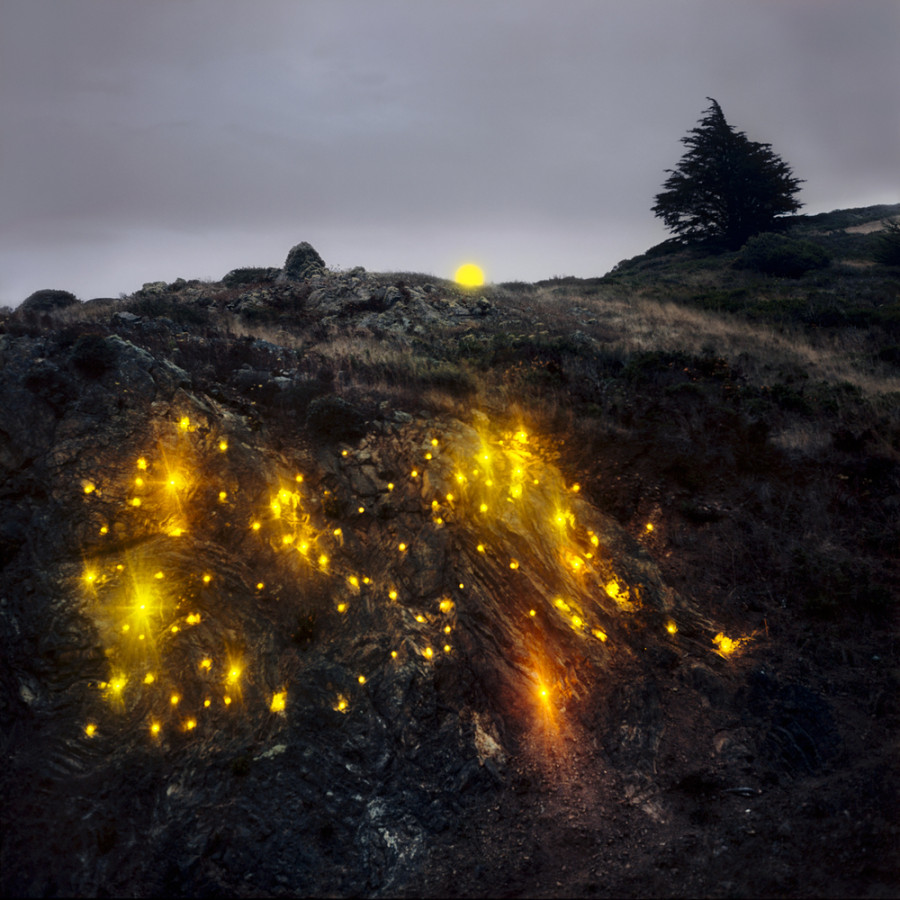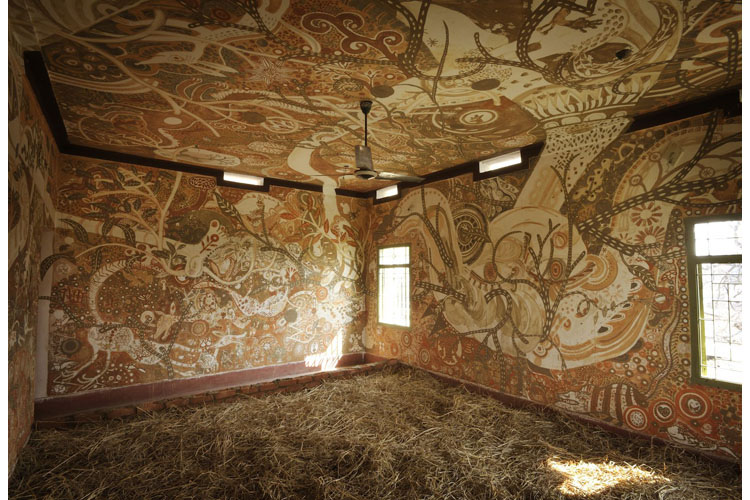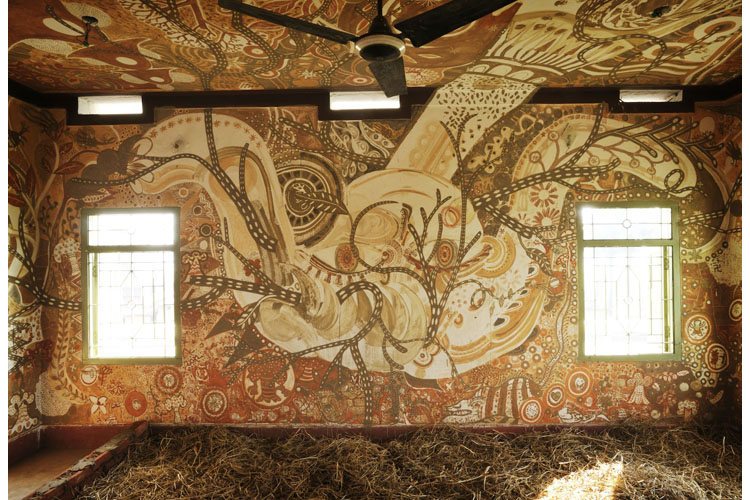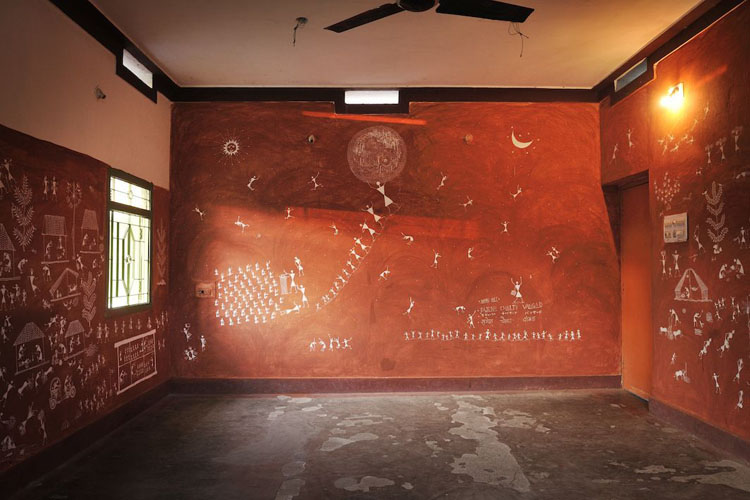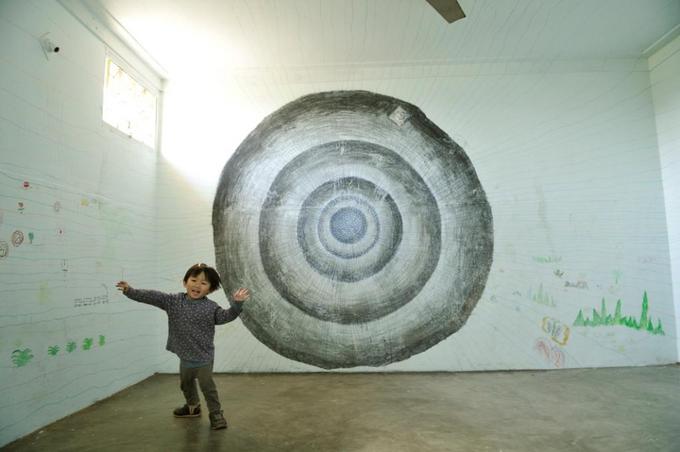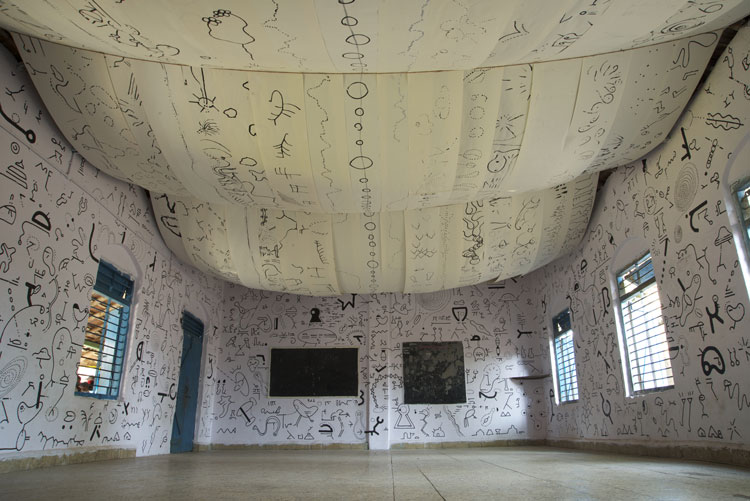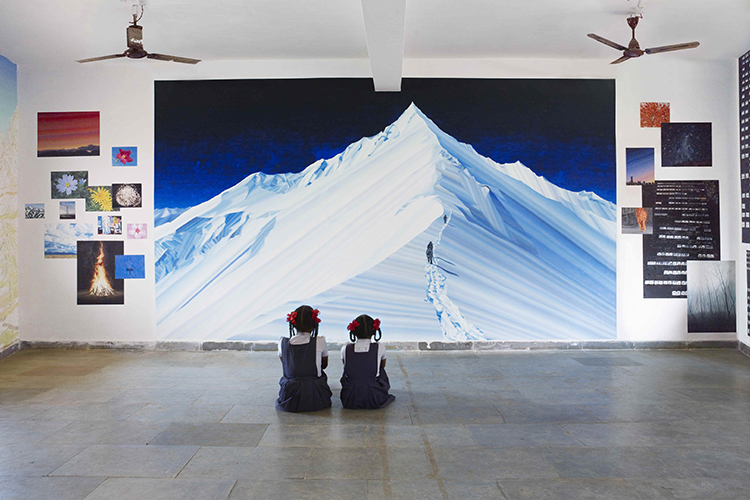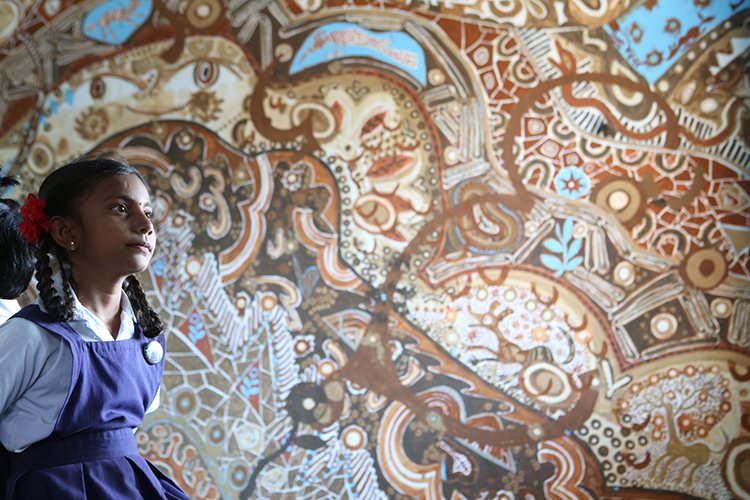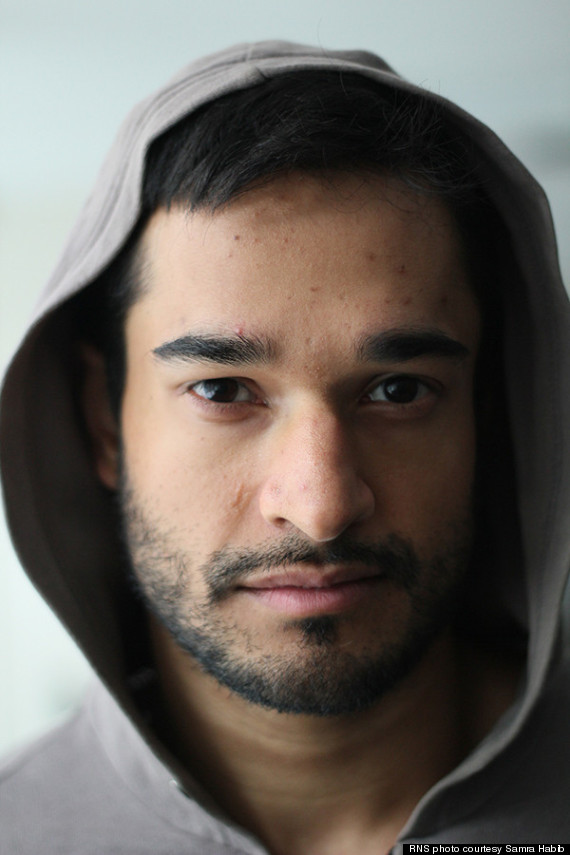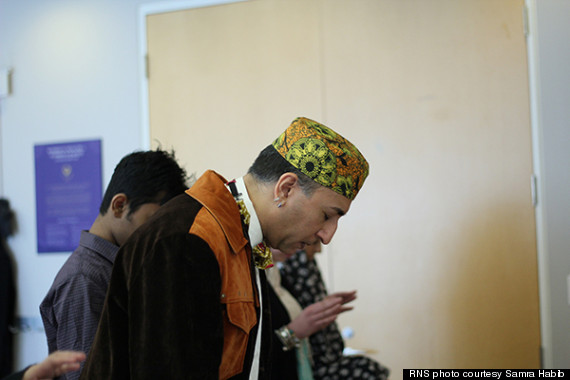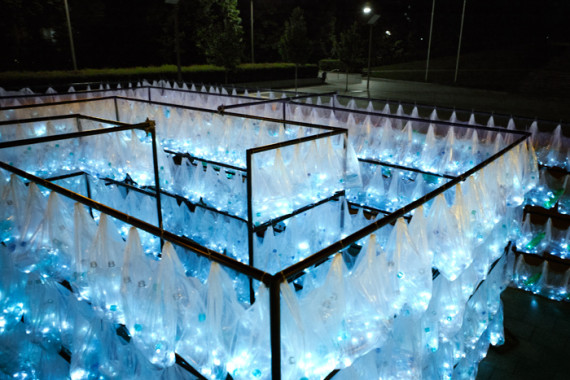This is the fifth installment in HuffPost Gay Voices Associate Editor James Nichols' ongoing series "After Dark: NYC Nightlife Today And Days Past" that examines the state of New York nightlife in the modern day, as well as the development and production of nightlife over the past several decades. Each featured individual in this series currently serves as a prominent person in the New York nightlife community or has made important contributions in the past that have sustained long-lasting impacts.
HuffPost Gay Voices believes that it is important and valuable to elevate the work, both today and in the past, of those engaged in the New York nightlife community, especially in an age where queer history seems to be increasingly forgotten. Nightlife not only creates spaces for queers and other marginalized groups to be artistically and authentically celebrated, but the work of those involved in nightlife creates and shapes the future of our culture as a whole. Visit Gay Voices regularly to learn not only about individuals currently making an impact in nightlife, but those whose legacy has previously contributed to the ways we understand queerness, art, identity and human experience today.
The Huffington Post: You've been fully invested in the NYC queer nightlife scene since 1968. Can you describe your journey over the past 46 years to becoming the legendary artist and performer that you are today?
Penny Arcade: I found my “place” in society and discovered my milieu at an early age in a gay bar in Hartford in 1965 -- at 14 years old. To say it was a lifesaver is not an exaggeration. The values that supported individuality and critical thinking, which I encountered in the remarkable people from all walks of life, would support the arc of my own life. The domain of outsiders, seekers and adventurers has always been the nighttime. It was what was left to us, the daytime being the realm of the "real" world, a world that has very little tolerance for people who don’t fit the mold of middle-class respectability and who, in fact, reject its straitjacket.
I washed up on the shores of the East Village in 1967, having just turned 17 after spending 1967’s Summer Of Love in Provincetown. I was taken in by Jaimie Andrews, a 27-year-old gay man who introduced me to The Playhouse Of The Ridiculous, John Vaccaro’s explosive rock and roll, political queer glitter/glam theatre of the late '60s. It was a highly improvisational performance group and our audience was mostly made up of artists, poets, filmmakers, intellectuals, junkie criminal artists and others who loved art and ideas -- in short, a nice mix. What was called the “Downtown Art Scene In The Late 60’s" was made up of probably 500 people or less. In other words, it was a small scene.
During my first two years with the Playhouse, Andy Warhol saw me in plays and invited me to take part in his scene. Along with Jackie Curtis, Candy Darling and later Holly Woodlawn, I was part of his entourage for a short time before he asked me to be in "Women In Revolt," which was the last film with Andy behind the camera and directed by Paul Morrissey. It was shot in 1970 but released in 1972. In the winter of 1971 I left New York with The Playhouse Of The Ridiculous and we went to Amsterdam. From there I embarked on a life of both precarious and wholesome adventures until I returned to NYC in 1981 at the age of 30 to recreate my role in Ken Bernard’s play "Nite Club" for LaMama’s 20th anniversary with The Playhouse. Shortly after this I began to participate in the growing performance art scene in the East Village --and I guess the rest is history. I have been making my own performance and theatre work now for almost 30 years.
Is there a period of your life that acted as a particularly defining moment in the formation of your identity as an artist?
Certainly the years I spent with The Playhouse Of The Ridiculous laid the foundation for the kind of political rock and roll theatre I do today. At that time, downtown had several artist bars and cafes but the hub for us was Max’s Kansas City on Park Avenue South. Andy Warhol had colonized the back room at Max’s in 1965 and it was an intense collection of artists, writers, poets, hangers on and celebrities. The front bar of Max’s was dominated by mostly all male painters and sculptors of The New York School. These included heavy hitters like Larry Rivers, Frosty Myers, Roy Lichenstein, John Chamberlain and others, whose presence attracted hip celebrities and the jet setters who liked to slum among artists.
Max’s Kansas City was a hotbed of creative nightlife in the 60’s and 70’s and was very important to my development because it attracted and was home to a wide variety of creative entities. It was like the café societies of previous periods, like the 1920’s in Berlin, 1910’s in Zurich, Paris in the 1850’s, London in the 1890’s where you not only met people but got to know them over time because everyone went there every night. You met people who changed your life by exposing you to ideas, which changed your thinking and -- in a case like mine -- actually
taught me how to think.
These years would influence and inspire me for the rest of my life. The most important element I suppose was that many of the people I met and invested in at Max's validated my original thinking, as I was introduced to different ideas and different ways of being and art making through knowing them.
What kind of work do you tend to produce? How would you say nightlife influences or informs your art?
I create improvisational performance art and theatre, which is comedic, dramatic and infused with cultural criticism and poetry, and is quite influenced by rock and roll. I also use a lot of music in my work. In many of my larger performance pieces I include dance breaks for the audience and have a bar or at least a BYOB situation. My long-time collaborator of 23 years Steve Zehentner, a former architect and now a video producer, and I like to create an open space for the public as often as possible.
Since I started out in The Playhouse Of The Ridiculous, which broke down the fourth wall between audience and artists, I have spent my career breaking down the other three walls. The goal of everything I do is to offer a high content experience that creates inclusion -- a transformative environment that fosters community, where the public is not stuck in their seats as spectators for the whole show as often as possible and where they can meet and make friends with new people. This is strongly encouraged.
In the 1980’s when I began making performance art my work was biographic -- I became other people -- people who both I and the audience knew, icons of the underground. At the same time I spoke directly to the audience about my life. By early 1990 my work started to be more autobiographic and I sought to stage events of my life, both from my past as well as events which were currently happening. I became one of the few performance artists who made full evening-length work as opposed to the smaller club work I had done and most performance artists did in the 1980’s.
The work I do now retains all of these elements and is a progression of the investigations I have always done. The work I do is also journalistic. I like to make work about real things that people can use.
What purpose do you think nightlife serves in allowing queer and marginalized people to be creative within safe and supportive spaces?
“Creative in safe and supportive spaces” sounds a bit like a sheltered workshop to me. I know that these are current buzz words in contemporary queerdom but all too often these days it means being protected from ideas and language. I think that is infantilizing.
I come from a radical queer nightlife background where we gathered to expand our horizons on all levels. The operative words to deal with feeling uncomfortable were "walk away," but we were also learned that we were responsible for our own feelings.
Perhaps being at Max’s Kansas City with Bridget Berlin ambushing people with a syringe of Methadrine was dangerous but you learned to avoid it and, in this way, you learned to look out for yourself. I believe in taking care of each other -- in looking out for each other. Pussy Faggot, the queer performance party run by Earl Dax which I host, is about creating community and about supporting individuality and orienting younger people to real life and real ideas held by others while giving everyone the opportunity to expand themselves on all levels: socially, creatively, intellectually, etc. Everyone is encouraged to have a sense of responsibility for the welfare of both themselves and others. Ethically -- not morally.
I accept that at a certain point in some peoples' lives they may need to be in a highly protected space if they have suffered trauma, but more and more it seems that some younger queer people are demanding an empathic protectionism that sequesters them from real life and doesn’t help them prepare for it either. I am as afraid as the next person of going to a nightclub and being stalked by a predator, but the point of queer nightlife is to be with strangers in a public setting where they can expect a certain level of personal safety and the opportunity to meet like-minded people.
How do you see what is happening now in New York nightlife today as building on a historical legacy of artists, performers, musicians and personalities over the past decades?
The queer world was built generation by generation on an tradition fueled by a sense of responsibility to pass on history and information. However the mono-generationalism that has supplanted the inter-generationalism of former decades is appalling. Of course it is grounded in ageism, but so is the whole of society. The truth is not everyone who participates in NYC nightlife when they are young keeps going out once they hit their 30’s or 40’s. As careerism has taken a stronger and stronger hold over people, there has been an increased dumbing down in the scene. Because people are not exposed to highly achieved artists, they lose the exposure to art experiences that build connoisseurship. If you only see people from your own generation when you are young you are never going to know what is possible in terms of personal development by seeing work that creates standards for creative achievement. By the same token if you don’t see what younger people are trying to do you lose out too. I find that many of the younger artists are rebelling against the careerism model that society has fed them. They are waking up to the limitations of the "emerging art” model that spits them out whole at 37 and are eager for mentorship and knowledge of the past.
We live in an age where queer history seems to be increasingly forgotten. Do you think this erasure is dangerous?
The erasure of history is the number one issue in culture for me.
Steve Zehentner and I have run the Lower East Side Biography Project “Stemming The Tide of Cultural Amnesia” weekly for 15 years where we seek to preserve important voices for the future. We edit myself, the interviewer, out so that the public gets a one-on-one experience with highly self-individuated people. It is my attempt to create virtually the kind of artistic and social environment I had the luck to be in as a young person.
Until 1990 it was possible to see and know a wide variety of work. In 1992 through the early 2000’s, Jackie 60 (later Mother) was to my mind the greatest intentional night club to exist after Max’s (which was an accidental nightclub). Jackie 60 had an actual mandate to present great art and culture from all existing generations and genres. Chi Chi Valenti, the Empress and her team created this vision and it was the sustaining nightlife life preserver that married clubbing and culture. They had a different theme, complete with decorations, performances, presentations, performances and dress code every week for years! Earl Dax and I try to carry this on, at least intellectually and artistically, at Pussy Faggot through Earl's curation and by what I present while hosting.
Queer nightlife has been an ongoing cultural hotbed for decades, if not centuries, if not from when time began and a small group of outsiders, queers, artists, and madmen took a corner of a cave for themselves and "carried on" as we used to say in the 60's to the 80's. Whatever you love about nightlife and queer culture right now is under threat from many forces -- not just real estate but from other forces. For example, the whole dumbing down of the ideas that created and continue to create culture, the middle-class mainstreaming and absorption into the status quo of many gay people, and the very flawed scholarship that informs the academization of queer culture, "fetishizing" certain aspects while erasing the real history of it. What is called queer history is really just a part of countercultural struggle that was not striated by sexual orientation. That was a '70s concept to divide people up into separate groups. Queer History is a history of Bohemia -- it is a history of resistance to mediocrity, injustice and assimilation.
Michael Alig talked a bit about "subverting the establishment" and nightlife in political terms throughout his interview. Do you consider nightlife to be political? In what way?
Wherever people gather to be themselves and wherever individuality is celebrated and supported is political. Nightlife in itself is neither political or non-political. Whether it is political depends always on the people who are participating. Gay bars of the 1960’s were ALWAYS political because it was illegal to be gay. In the present era of gay marriage, gay Republicans, etc. where the drift is towards being sanctioned and accepted by the middle-class mainstream, it is completely dependent on the curators, club organizers and their public to create a space for subverting the establishment. Certainly anything I am involved in is an opportunity for me to subvert the establishment -- I have dedicated my life and my work to that and so have many, many others. People like Chi Chi Valenti, Johny Dynel, Susanne Bartsh, Earl Dax, Michael Cavadias, Rob Roth, Formika, Justin Vivian Bond, Taylor Mac, Lady Bunny, Sherry Vine, Linda Simpson, Joey Arias and others too numerous to name here.
What projects are you currently working on?
I am working on a new show, Longing Lasts Longer, which will be at Joe’s Pub June 12 and 14 and later on August 8 at The Crowne and Anchor in Provincetown in support of The Afterglow Festival. People can keep up with my shows and events at my website, my Facebook and can follow me on Twitter.
What do you see within the future of New York nightlife?
For me, nightlife is not a part of a lifestyle element that you enter at 18 and exit when you grow up. Nightlife is public life -- for both the artists and the audience. Nightlife is where we gather together, it is our church. We commune and mediate with one another in a libidinal flow supported by music, dancing, elevating and inspiring performances, fun people we bond with over this environment and the night itself -- magic.
I am creating the future of NYC Nightlife right now. I invite everyone to join me in creating it with the many, many people who are creating nightlife culture today. If you ask my personal vision it is communication, coalition and the greater need for real community... emphasis on real. If you want it come be part of it. In the words of Allen Ginsberg: put your queer shoulder to the wheel!
For more from Penny Arcade head here to visit the artist's website. Missed the previous installments in this series? Check out the slideshow below.

